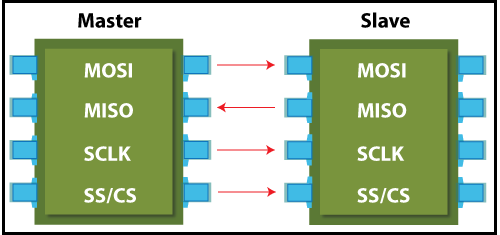SPI ProtocolSPI stands for the Serial Peripheral Interface. It is a serial communication protocol that is used to connect low-speed devices. It was developed by Motorola in the mid-1980 for inter-chip communication. It is commonly used for communication with flash memory, sensors, real-time clock (RTC), analog-to-digital converters, and more. It is a full-duplex synchronous serial communication, which means that data can be simultaneously transmitted from both directions. The main advantage of the SPI is to transfer the data without any interruption. Many bits can be sent or received at a time in this protocol. In this protocol, devices are communicated in the master-slave relationship. The master device controls the slave device, and the slave device takes the instruction from the master device. The simplest configuration of the Serial Peripheral Interface (SPI) is a combination of a single slave and a single master. But, one master device can control multiple slave devices. SPI InterfaceThe SPI protocol uses the four wires for the communication. There are shown in the figure. 
Note: If the single slave is present in the communication, that required only three wires. The SS (slave select) is not required in it.Advantages of SPI
Disadvantages of SPI
Applications of SPI
Next TopicTCP Port
|
 For Videos Join Our Youtube Channel: Join Now
For Videos Join Our Youtube Channel: Join Now
Feedback
- Send your Feedback to [email protected]
Help Others, Please Share









